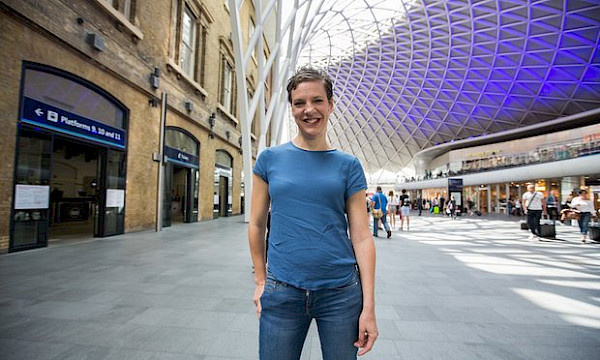
14 Jul 2016
Network Rail has launched a fantastic new campaign, 'Spaces and Places for Everyone' to make the railway accessible and inclusive for every passenger, from wheelchair users, to elderly passengers to parents with buggies.
The brilliant disabled comic, Francesca Martinez, has teamed up with Network Rail to launch the campaign. The aim is to make train journeys easier for disabled passengers by ensuring inclusive design happens from the start, instead of being bolted on as an afterthought.
Populus polling shows that a quarter of disabled people don't feel their rail journey will be an easy one (24%) but that more than half of disabled people (58%) have noticed accessibility improvements on the railway.
Network Rail is consulting with passengers, communities and staff, and making improvements: more lifts, better lighting, accessible footbridges, making platforms easier to find, better seating, induction loops and information for hearing-aid users.
Francesca, who has cerebral palsy but prefers to describe herself as ‘a bit wobbly’, often uses the train to travel around the country for her work as a stand-up comic. Here is the campaign video of Francesca talking to Network Rail chief Mark Carne.
https://www.youtube.com/embed/0xYfR-TzQWM
We think Network Rail's campaign is fantastic and we applaud Mark Carne - and Francesca Martinez - for getting behind this. Now we want to see Mark Carne keeping Network Rail's stations and railway assets public, so that he can make the campaign successful.
Why is public ownership important to deliver 'spaces and places for everyone'?
Firstly, it's easier to make sure stations have inclusive design if they are in public ownership. The success stories mentioned at the campaign launch have all happened at publicly owned stations, owned by Network Rail and run for passengers rather than just for profit:
-
At Reading station, visually impaired people have the option of a special audio guide to help them navigate through the station and the town
-
At Birmingham New Street, a “dog spending area” has been introduced for those with guide dogs who need to “spend a penny”
-
At London Bridge, lifts and escalators are being added to all platforms
Handing over these Network Rail-run stations to private companies (which is being talked about with Citigroup bankers) would make it harder for stations to be run in the public interest. Profit is likely to come above the access needs of disabled passengers, and Network Rail will lose the direct control it needs to make improvements.
Secondly, Network Rail needs to keep railway assets - telecomms and power assets, stations and commercial property - in public ownership because they generate an ongoing income. This can be used to fund ongoing improvements in inclusive design. Our recent report suggests that selling off railway assets would mean the public loses out by £10 billion in ten years.
The government has cut its Access for All funding – for improvements to help disabled people use the railway – by almost a half. Surely that means Network Rail needs to make the most of ongoing income, and think long term, not quick-fix sell-offs.
The Network Rail campaign is an example of the great results that public ownership can achieve for passengers. Now we're calling on Mark Carne to keep stations and other railway assets in our hands for the future. Sign the petition.

Photo credit: the Guardian

Comments
Christine REDMOND 9 years ago
I drive my disabled daughter every where you because the trains and stations are rubbish for taking my disabled daughter. So including my husband, that 3 return daytrip tickets the South East rail company looses 3-4 times a week 52 weeks a year.
Reply